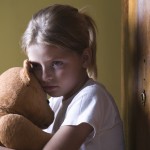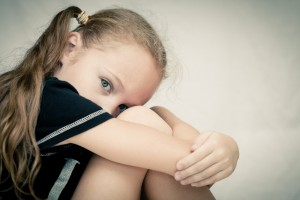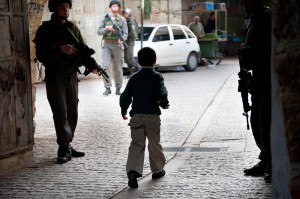
How many children develop Post Traumatic Stress Disorder (PTSD) after a traumatic experience such as an assault, a car crash, war or disaster?
William Yule, one of the godfathers of child traumatic stress research, once pointed out that rates reported in separate studies varied from 0 to 100%. So what is on average the rate to be expected? An unpublished meta-analysis conducted in 1994 reported a rate of 36%. With an international team of collaborators, we conducted a new meta-analysis to verify and potentially update that finding.
The wide variety in individual study results suggests that various factors may be in play: apparently not every type of exposure, set of circumstances or group of children is related to similar PTSD rates. In addition, there may be methodological variation in the studies.
Methods
Through database and reference list searches, we systematically identified studies that used one of a few well-established, clinical diagnostic interviews for PTSD in children such as the CAPS-CA and the ADIS-CP. The studies also had to satisfy a number of criteria. For example, all children in the sample should have been exposed to a traumatic event that satisfied the trauma-exposure criteria defined in the DSM-IV (criterion A1) or DSM-5. The studies should not involve mental health therapy, because of the risk that out of a group of exposed children, a relatively high proportion with mental health difficulties would want to participate in a therapy study, skewing PTSD rates.
We found 72 articles that reported on 43 independent samples and a total of 3,563 children. We coded the characteristics of the samples and their exposure, details regarding the PTSD measurement and the reported outcomes. We combined the data by means of pooled incidence estimates and meta-analyses of variance to look at the effects of potential moderators.
Results
- The overall rate of PTSD was 15.9% (with a 95% confidence interval ranging from 11.5 to 21.5%); approximately 1 in 6 children who had been exposed to trauma

Nearly one in three girls exposed to interpersonal trauma went on to suffer from PTSD
- This rate varied according to the type of exposure and gender:
- Least at risk were boys exposed to non-interpersonal trauma (8.4%, 95% CI 4.7 to 14.5)
- While girls exposed to interpersonal trauma showed the highest PTSD rates (32.9%, 95% CI 19.8 to 49.3)
We did not find any significant differences according to the specific choice of assessment interview (within the set of well-established interviews) or whether the PTSD assessment was conducted with the parent or the child.
The rate of 16% is substantially lower than the previous estimate of 36%. Because the methods of the previous analysis were not available, we could not directly identify the reasons for the difference. One possibility is that the previous meta-analysis included studies based on self-report via questionnaires, which can overestimate PTSD. Even though our results indicate a lower rate of PTSD, 16% remains a significant minority of children exposed to trauma. In addition, PTSD is not the only possible consequence; children may also develop other mental health difficulties, such as anxiety and depression.
Limitations
Our meta-analysis has a number of limitations that should be kept in mind. Important caveats are:
- The majority of the studies were conducted in high-income countries such as the US and the UK; the rates we found cannot be generalised to children in low-income and unstable settings.
- It would have been very interesting to look at the effect of time but unfortunately, the sample/methodological characteristics of the studies did not allow this.
- Many of the studies had quite extensive exclusion criteria, for example excluding children with history of trauma or mental health problems. This may have led to an underestimation of the incidence of PTSD.
Conclusions
To conclude, this meta-analysis brought together the best evidence on child PTSD; a set of studies that applied well-established clinical interviews. The findings indicate that, overall, approximately 1 in 6 children develop PTSD after trauma exposure.

The type of trauma plays an important role in the subsequent rate of PTSD
However, there are important moderators. The type of trauma in particular, was an important factor: whereas 1 in 4 developed PTSD after interpersonal trauma such as assault, a much lower figure of 1 in 10 developed PTSD after non-interpersonal trauma. In addition, girls appeared to be more at risk than boys.
A rate of 16% represents a significant group of children exposed to trauma. It also points to the sizeable full burden of trauma, since this study did not include other mental health disorders such as depression, generalised anxiety disorder, and separation anxiety.
Links
Alisic E, Zalta AK, van Wesel F, Larsen SE, Hafstad GS, Hassanpour K, & Smid GE (2014). Rates of post-traumatic stress disorder in trauma-exposed children and adolescents: meta-analysis. The British Journal of Psychiatry, 2014, 204, 335-340. [PubMed abstract]
Yule W (2001). Posttraumatic stress disorder in the general population and in children. The Journal of Clinical Psychiatry, 2001, 62 Suppl 17. [PubMed abstract]
Palestinian child image appears courtesy of Ryan Rodrick Beiler / Shutterstock.com